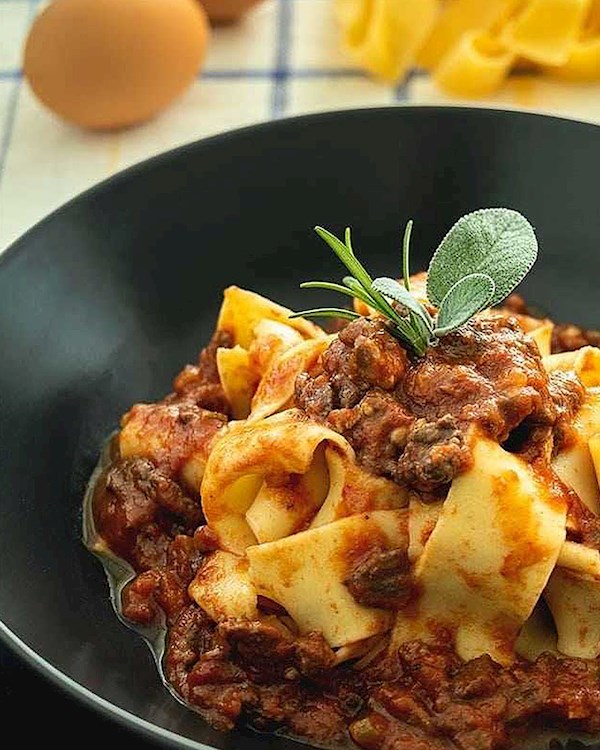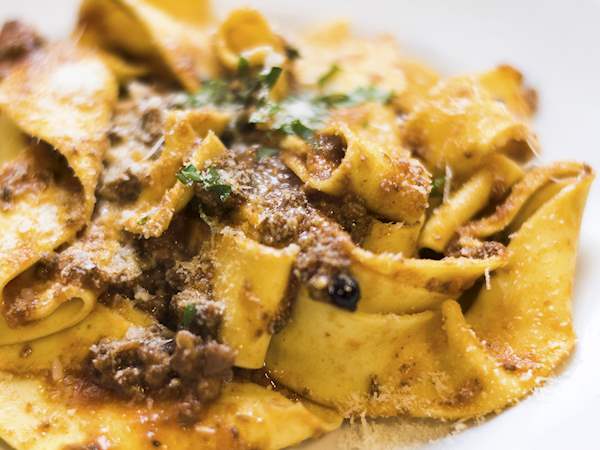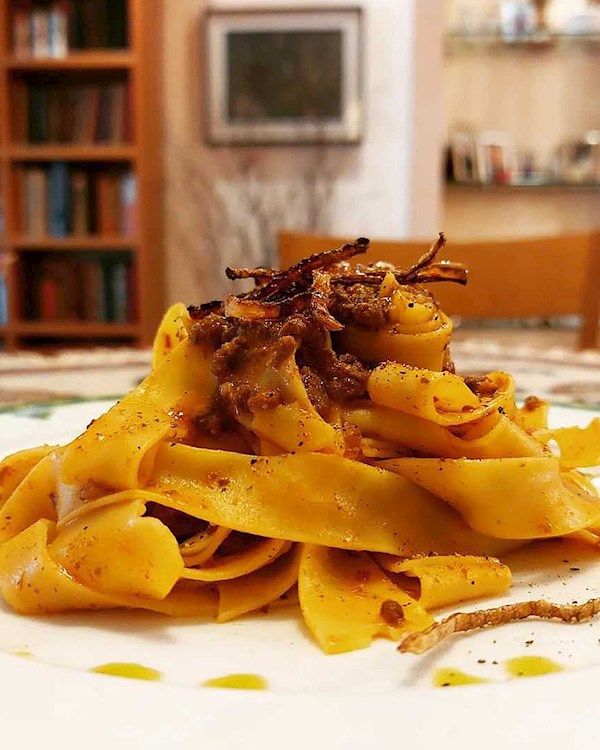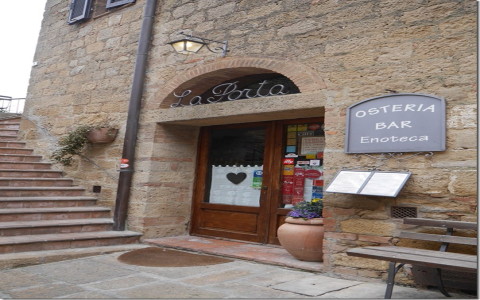Alright folks, gather ’round! Today I’m spillin’ the beans on my attempt at making pappardelle alla cinghiale – basically, wide noodles with wild boar ragu. Sounds fancy, right? Well, let me tell you, it was a journey.

First things first, gotta get that boar! Luckily, my local butcher had some wild boar shoulder. I grabbed about 2 pounds. Back home, I hacked it into roughly 1-inch chunks. Wasn’t pretty, but it did the job.
Next up, the mirepoix. That’s fancy talk for chopped onions, carrots, and celery. I diced about one large onion, two carrots, and two celery stalks. Don’t be too precious about the size, we’re going for rustic here.
Now, the fun part. In a big, heavy-bottomed pot (I used my Dutch oven), I browned the boar in batches with some olive oil. You gotta get a good sear on it – that’s where the flavor lives. Don’t overcrowd the pot, or it’ll just steam instead of brown. Trust me, I learned that the hard way.
Once all the boar was browned, I set it aside and tossed in the mirepoix. I cooked that down until it was softened and starting to get some color, maybe 8-10 minutes. Then, I added a couple of cloves of minced garlic and cooked for another minute until fragrant. Smelled amazing already!
Here’s where the magic happens. I poured in a generous glug of dry red wine – about a bottle, honestly. I let that simmer for a few minutes, scraping up all the browned bits from the bottom of the pot. Those bits are called fond, and they’re flavor gold!

Next, I added back the boar, along with a can of crushed tomatoes, a bay leaf, some sprigs of fresh rosemary and thyme, and a pinch of red pepper flakes. I seasoned it all with salt and pepper, brought it to a simmer, then covered the pot and stuck it in a low oven (about 300°F) for about 3 hours. You could also simmer it on the stovetop, just make sure to keep the heat very low.
While the ragu was doing its thing, I decided to tackle the pappardelle. I bought some dried pappardelle – ain’t nobody got time for homemade pasta today! But hey, if you’re feeling ambitious, go for it.
After 3 hours, the boar was fall-apart tender. I took it out of the oven and shredded the meat with two forks. Then, I skimmed off any excess fat from the surface of the ragu. Nobody wants a greasy sauce.
I cooked the pappardelle according to the package directions until it was al dente. Then, I drained it and tossed it with the ragu. Make sure to reserve some of the pasta water – you might need it to loosen up the sauce.
Finally, I served the pappardelle alla cinghiale with a generous grating of Parmesan cheese. And let me tell you, it was worth all the effort! The boar was rich and flavorful, the sauce was complex and delicious, and the pappardelle was perfectly cooked. It was a hearty, satisfying meal that’s perfect for a cold evening.

Lessons learned? Don’t be afraid to experiment! And always brown your meat properly – it makes all the difference.
- Get good quality wild boar.
- Don’t skimp on the red wine.
- Be patient and let the ragu simmer for a long time.
Would I make it again? Absolutely! Maybe next time I’ll even try making my own pasta. But for now, I’m happy to enjoy the fruits (or should I say, meat?) of my labor.









